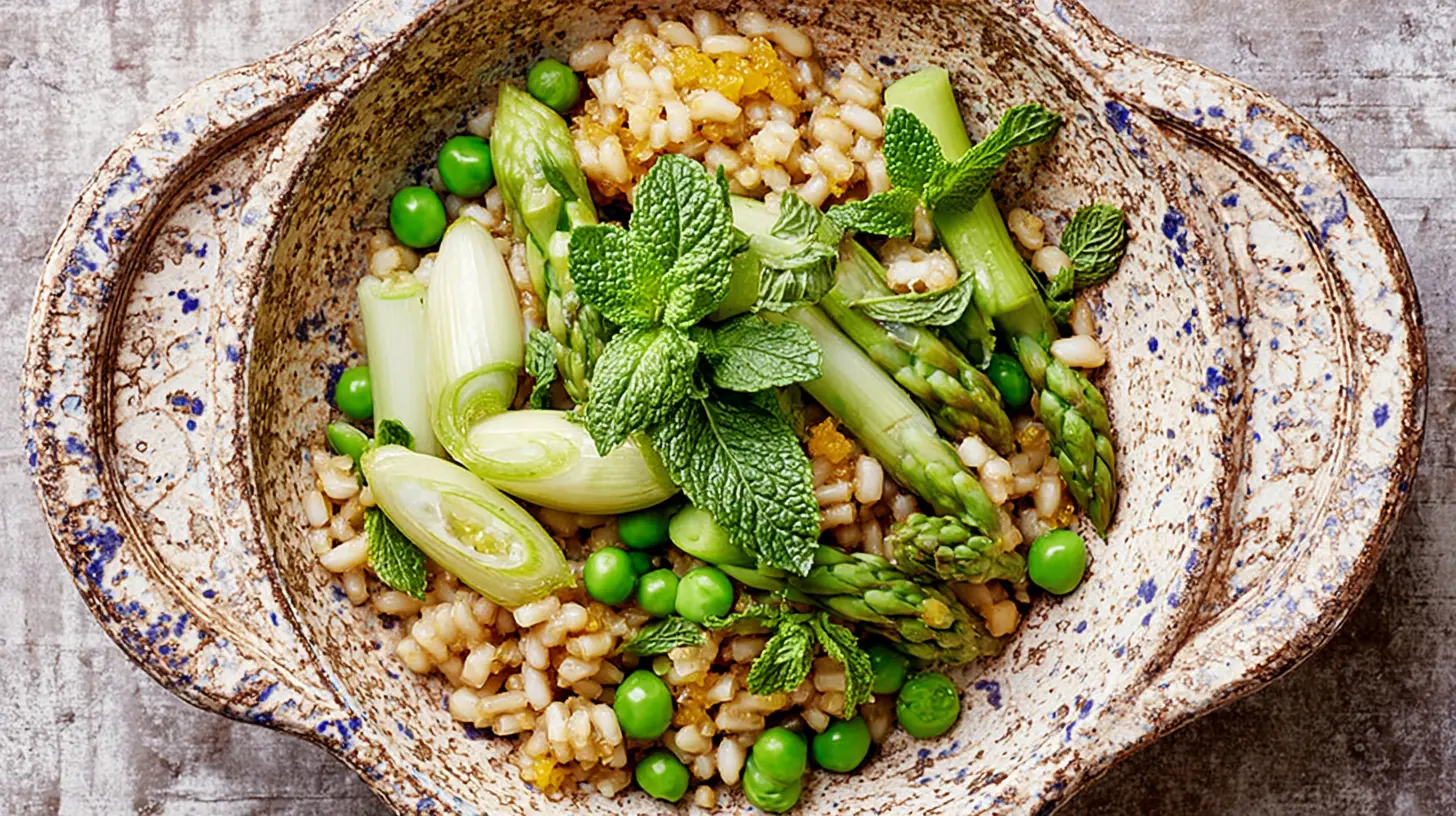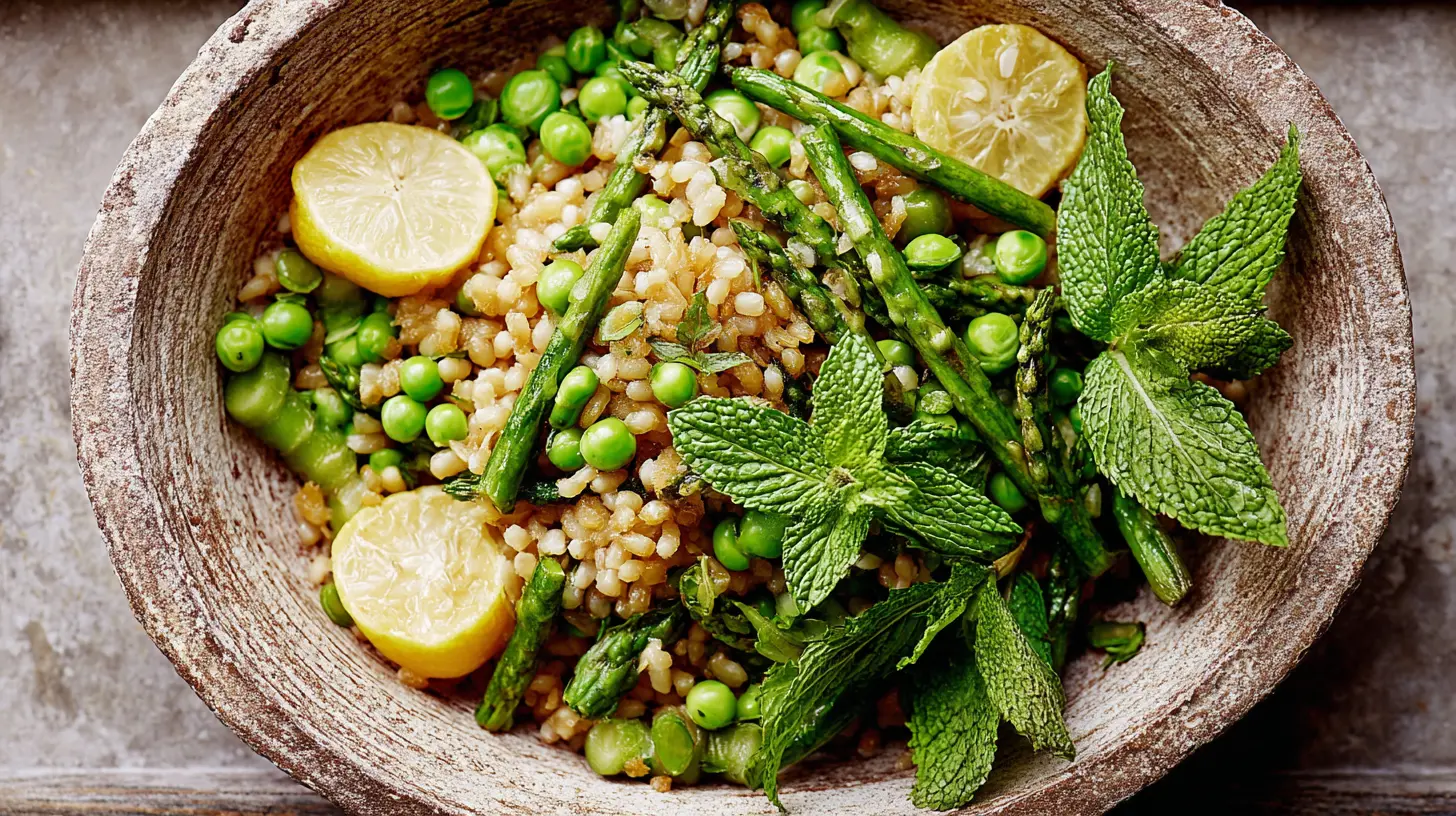The moment spring rolls around, I find myself yearning for meals that are as bright and invigorating as the season itself. And let me tell you, few things conjure that feeling more perfectly than a dish bursting with lemony spring vegetables. If you’re anything like me, you’re constantly on the hunt for quick, healthy, and incredibly flavorful dinner solutions, especially after a busy day. That’s why I’m so excited to share these six quick dinner fixes, all centered around the simple magic of fresh, zesty spring veggies.
Why You’ll Love These Dishes
These aren’t just meals; they’re a celebration of spring on a plate, designed with your busy life in mind. You’ll adore them because:
- Speedy Preparation: Each of these six recipes is engineered for quick weeknight cooking, meaning less time in the kitchen and more time enjoying your evening.
- Vibrant Flavors: The combination of fresh spring produce and bright lemon creates an incredibly refreshing and uplifting taste profile that never fails to satisfy.
- Nutrient-Packed: Loaded with seasonal vegetables, these dishes are naturally wholesome and nutritious, perfect for a healthy lifestyle.
- Versatile: While we’re focusing on six specific ideas, the core concept of lemony spring vegetables is incredibly adaptable, letting you use whatever fresh produce you have on hand.
- Budget-Friendly: Utilizing seasonal vegetables often means getting the best quality at the best price.
> “I made one of the Lemony Spring Vegetable dishes last night, and it was a revelation! So quick, so fresh, and absolutely delicious. My whole family loved it, even my picky eater. This is going into our regular rotation!”
How These Recipes Come Together
The beauty of these Lemony Spring Vegetable dishes lies in their simplicity and common approach. Generally, you’ll start by lightly cooking your chosen spring vegetables, often with a hint of garlic or shallots to build a foundational flavor. Then, a generous squeeze of fresh lemon juice, along with its zest, brightens everything up, creating that signature vibrant taste. Sometimes, a light sauce or a finishing touch of fresh herbs ties it all together beautifully. We’ll explore variations involving pasta, grains, proteins, and even a tart, but the core essence remains that fresh, citrusy vegetable goodness.
What You’ll Need
To embark on your Lemony Spring Vegetable culinary journey, you’ll find these key ingredients are foundational across many of the recipes. Specifics will vary for each of the six fixes, but having these staples on hand will make meal prep a breeze.
Key Ingredients
- Fresh Spring Vegetables: Asparagus, peas (fresh or frozen), green beans, spinach, snap peas, zucchini, leeks, broccoli rabe – choose what’s seasonal and appealing to you.
- Lemons: Plenty of fresh lemons for zest and juice. This is non-negotiable for that signature “lemony” flavor!
- Olive Oil: A good quality extra virgin olive oil for sautéing and finishing.
- Garlic: Fresh garlic cloves, minced or thinly sliced, for aromatic depth.
- Fresh Herbs: Parsley, dill, mint, chives, or basil complement these flavors beautifully.
- Salt and Freshly Ground Black Pepper: Essential seasonings to bring out the best in your ingredients.
- Optional Enhancements: Vegetable broth, white wine, Parmesan cheese (or nutritional yeast for dairy-free), red pepper flakes for a touch of heat.
Directions to Follow
While each of the six quick dinner fixes will have its own detailed steps, the general flow for preparing your Lemony Spring Vegetables often follows a similar pattern. Think of this as the master blueprint:
- Prep Your Veggies: Wash and chop all your selected spring vegetables. For asparagus, snap off the woody ends. Shell peas if using fresh.
- Aromatics First: In a large skillet or pot, heat a drizzle of olive oil over medium heat. Add minced garlic (and perhaps some finely diced shallots or leeks) and sauté until fragrant, usually about 1-2 minutes. Be careful not to burn the garlic.
- Add Hardier Vegetables: Incorporate any harder vegetables like asparagus spears or green beans first, cooking for a few minutes until they start to become tender-crisp.
- Introduce Softer Vegetables: Add quicker-cooking vegetables such as peas, spinach, or snap peas. Sauté until they are just tender and vibrant.
- Lemon Time: Remove the pan from the heat. Squeeze in the fresh lemon juice and add plenty of lemon zest. Toss everything together to coat evenly.
- Season and Finish: Season generously with salt and freshly ground black pepper. Stir in any fresh herbs you’re using. You can also drizzle with a little more olive oil if desired for a richer finish.
- Serve Immediately: Lemony spring vegetables are best enjoyed fresh off the stove.
Best Ways to Enjoy It
The beauty of Lemony Spring Vegetables is their incredible versatility, making them a fantastic base for so many dinner ideas. Here are some creative ways to serve and pair them:
- As a Side Dish: A simple bowl of sautéed lemony spring vegetables makes a fantastic, vibrant accompaniment to grilled fish, roasted chicken, or even a simple steak.
- Pasta Power: Toss the warm vegetables with your favorite pasta (linguine, orecchiette, or penne work beautifully), a splash of pasta water, a generous grating of Parmesan, and a drizzle of olive oil for a light yet satisfying meal.
- Grain Bowl Goodness: Pile them over a bed of quinoa, couscous, farro, or brown rice for a wholesome and delightful grain bowl. Add some crumbled feta or goat cheese for extra tang.
- Frittata or Tart Filling: Incorporate the cooked, cooled vegetables into a spring frittata or use them as a vibrant filling for a savory tart or quiche.
- Protein Partner: Stir them into scrambled eggs, fold them into an omelet, or serve alongside seared scallops or shrimp for an elevated weeknight dinner.
- Light Soup Finish: Swirl a handful of fresh lemony spring vegetables into a light broth-based soup just before serving for an extra pop of flavor and texture.
Keeping Leftovers Fresh
Proper storage ensures you can enjoy the vibrant flavors of your Lemony Spring Vegetables even after the initial meal.
- Storage: Once cooled to room temperature, transfer any leftover Lemony Spring Vegetables into an airtight container. Store them in the refrigerator for up to 3-4 days. The lemon flavor might intensify slightly, which can be quite pleasant!
- Reheating: For best results, gently reheat the vegetables in a skillet over medium-low heat, stirring occasionally, until just warmed through. Avoid high heat, as it can cause them to become mushy. You can also microwave them in short bursts, stirring in between. A splash of water or a tiny bit of olive oil can help revive their texture and moisture.
- Freezing: While some vegetables like peas and green beans freeze well, the overall texture of a mixed “lemony spring vegetable” dish might become softer upon thawing due to the tender nature of many spring greens. If you do freeze, use a freezer-safe bag or container and consume within 2-3 months. Reheat from frozen in a skillet for the best outcome.
Helpful Cooking Tips
Achieving truly delicious Lemony Spring Vegetables is straightforward, but a few pro tips can elevate your dish from good to unforgettable.
- Don’t Overcook: Spring vegetables are delicate. Cook them just until tender-crisp to retain their vibrant color, nutrients, and slight bite. They should still have a little snap to them.
- Fresh Lemon is Key: Bottled lemon juice simply won’t cut it. The bright, nuanced flavor of fresh lemon juice and zest is essential for that signature “lemony” taste. Zest before you juice!
- Balance the Flavors: Taste as you go. Add salt, pepper, and more lemon juice if needed. Sometimes a tiny pinch of sugar can help balance the acidity if your lemon is particularly tart.
- Experiment with Herbs: Don’t limit yourself to just parsley. Dill and mint pair wonderfully with peas and asparagus, while chives add a delicate oniony note.
- Pan Size Matters: Use a large enough skillet so your vegetables aren’t crowded. Crowding the pan can steam the vegetables instead of sautéing them, leading to a less vibrant result.
- A Touch of Heat: A pinch of red pepper flakes adds a subtle warmth that complements the lemon beautifully without overpowering the delicate vegetable flavors.
Recipe Variations
Beyond the core concept, there are countless ways to put a creative twist on your Lemony Spring Vegetables and make them uniquely yours.
- Mediterranean Flair: Add some crumbled feta cheese, Kalamata olives, and sun-dried tomatoes to the mix. A sprinkle of oregano would also be fantastic.
- Asian-Inspired: Swap out olive oil for a touch of sesame oil, add a dash of soy sauce or tamari, and finish with toasted sesame seeds and thinly sliced green onions for an unexpected but delicious twist.
- Creamy Indulgence: Stir in a tablespoon or two of cream cheese, mascarpone, or even a dairy-free cream alternative at the end to create a richer, slightly creamy sauce.
- Spicy Kick: If you love heat, increase the red pepper flakes or add a finely minced jalapeño or serrano pepper along with the garlic.
- Nutty Crunch: Toast some slivered almonds, pine nuts, or chopped walnuts and sprinkle them over the finished dish for added texture and healthy fats.
- Herbal Blend: Instead of just one herb, combine a medley of fresh dill, parsley, and chives for a complex and aromatic finish.
Common Questions
Here are some answers to frequently asked questions you might have about making these Lemony Spring Vegetable dishes:
Can I use frozen vegetables for these recipes?
Absolutely! Frozen peas, green beans, and even some mixed spring vegetable blends work well, especially when fresh isn’t available or convenient. Just be mindful that they might cook quicker and release more water, so adjust cooking times accordingly and ensure you sauté them long enough for any excess moisture to evaporate.
How do I prevent my lemon from tasting too bitter?
To avoid bitterness, make sure you’re only zesting the bright yellow part of the lemon peel and avoiding the white pith underneath. When juicing, use fresh, ripe lemons; older or unripe lemons can sometimes yield a more bitter juice. Balancing with salt and possibly a tiny pinch of sugar can also help mellow any bitterness.
What’s the best way to clean asparagus?
To clean asparagus, hold a spear at both ends and gently bend it. It will naturally snap where the tough, woody end begins. Discard the woody ends. Rinse the remaining tender spears under cold water. For thicker asparagus, you might also want to lightly peel the bottom inch or two of the stalk with a vegetable peeler to ensure even tenderness.

Tangy Lemon-Herb Roasted Spring Mix
Ingredients
Equipment
Method
- Preheat your oven to 400°F (200°C).
- Wash and trim the spring vegetables, cutting asparagus into 1-inch pieces, broccoli into small florets, and trimming green beans.
- In a large bowl, toss the trimmed vegetables with olive oil, minced garlic, salt, and black pepper until evenly coated.
- Spread the seasoned vegetables in a single layer on a baking sheet and roast for 15-20 minutes, or until tender-crisp and slightly caramelized.
- Halfway through, shake or stir the pan for even roasting.
- Immediately after removing from the oven, squeeze fresh lemon juice and sprinkle lemon zest over the hot vegetables.
- Add chopped fresh herbs and toss gently to combine.
- Taste and adjust seasoning as needed, then transfer to a serving dish.
- Garnish with toasted pine nuts if desired and serve warm.

